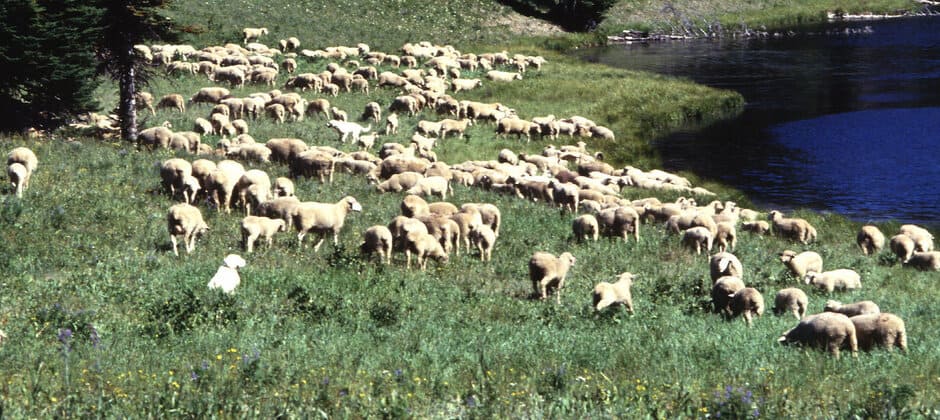Share this article
USDA must limit grazing around Sheep Experiment Station
Domestic sheep grazing is being limited around the U.S. Department of Agriculture’s Sheep Experiment Station in the Centennial Mountains along the Idaho-Montana border, after a federal court ruling issued earlier this month.
The judge issuing the ruling sided with the environmental groups that brought suit that such grazing could adversely affect grizzly bears and other wildlife.
In early 2019, the Western Watersheds Project, WildEarth Guardians and Center for Biological Diversity sued the USDA, arguing that the 2018 decision to reauthorize and expand domestic sheep grazing on the public lands around the agency’s Sheep Experiment Station violated the National Environmental Policy Act and the Administrative Procedures Act by failing to account for impacts to grizzly bears (Ursus arctos horribilis), bighorn sheep (Ovis canadensis) and other wildlife. The court agreed, ruling that grazing must be limited to certain limited areas until the government conducts further review on the effects on grazing on grizzlies and bighorn sheep.
The Sheep Experiment Station properties include about 48,000 acres of public lands. The station also has agreements to use an additional 20,000 acres of grazing land managed by other federal agencies. Managed by the Agriculture Research Service, the Sheep Experiment Station is home to about 3,000 sheep owned by the University of Idaho and used in a variety of research projects, both in feedlots and on the range. An earlier lawsuit halted most grazing around the station in 2013 and prompted the USDA to conduct an environmental analysis. A final Environmental Impact Statement was completed in 2017 and the expanded grazing program began in 2018.
Until the USDA completes further review, domestic sheep grazing will only be permitted to the extent that it was before the 2018 expansion, limiting it to an area near the Sheep Station’s Headquarters and a feedlot.
Domestic sheep can transmit the pathogen Mycoplasma, which causes pneumonia, to bighorn sheep. The disease can kill bighorns and, in subsequent years, can reduce lamb survival. Because of the station’s location in the Centennial Mountains, which run connect the Greater Yellowstone Ecosystem with large wilderness and roadless areas in Idaho and Montana, the area provides valuable grizzly habitat. Increased grazing could increase conflicts between grizzlies and livestock, as well as humans, in the area.
The Wildlife Society and the American Association of Wildlife Veterinarians have issued a joint statement on domestic sheep and goat disease transmission risk to wild sheep. The statement recognizes that disease transmission from domestic sheep and goats to wild sheep is a primary risk factor for wild sheep survival, restoration and management and emphasizes the need to develop and implement adaptive disease management strategies to address chronically infected wild sheep populations.
Read the TWS and AAWV Joint Issue Statement: Domestic Sheep and Goats Disease Transmission Risk to Wild Sheep
Read TWS’ Standing Position on Wildlife Disease
Header Image: A recent court decision will limit domestic sheep grazing around USDA’s Sheep Experiment Station in Idaho. Credit: Scott Bauer/USDA








